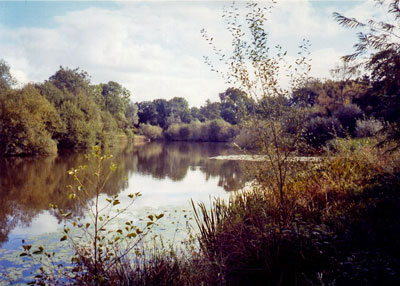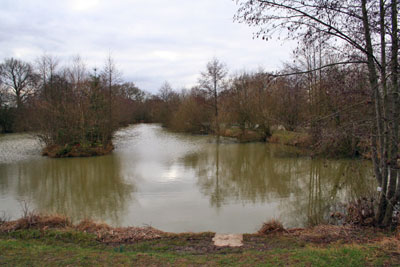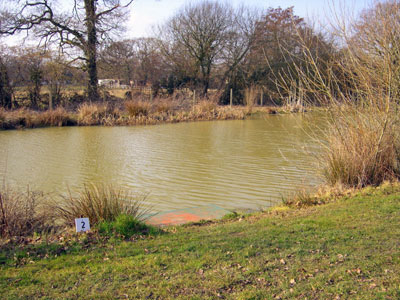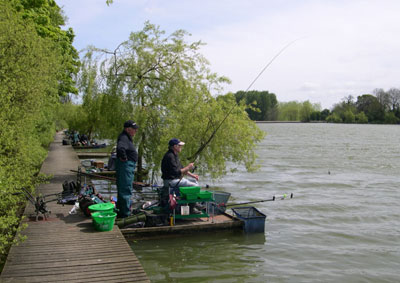Commercial Fisheries – About the Waters
THERE IS SO much information to convey in this series that it is sometimes hard to know where to start. But learning about the waters is going to help our understanding of the tackle and bait requirements, what fish are present and how to go about catching them, so it’s as good a place to start as any
There is no such place as a typical ‘Commercial Water’. And as I stated in the introduction much of what will be in this series also applies to club and private stillwaters. This means that everything from purpose-built waters to managed clay pits, gravel pits, mill lodges and canal top-up reservoirs can be included. Each has its own characteristics, and even two waters in the same category may be very different. What I do want to bury once and for all is the term ‘muddy carp puddle’; OK, one or two waters may well merit that derogatory description but there are plenty of very pleasant angling spots amongst the commercial waters. One of the problems is that when waters are newly developed it does take several years for the grass, shrubs and trees to naturalise the place; many owners have recognised this and, with a lot of hard work, turned barren banks into green and pleasant, wildlife-rich, fisheries.

What most of these waters do have in common is that they are comparatively compact with on-site parking. They usually have well developed paths around them, or even auxiliary car parks so that it is easy to get to all of the pegs (not always the case with some wilder club waters). The swims or pegs are well defined, often with comfortable purpose-built platforms, and a numbering system of permanent peg numbers. This helps when getting to know a water as you have a reference point when trying to learn about different areas of a lake. One aspect that does vary is how close the pegs are; it has long been my view that the further apart the pegs the better the fishing though some would argue that if they’re too far apart the fish find the gaps! In general terms the pegging is close by river standards, but this is mitigated by high stocking levels. One fishery owner to recognise this is Pete Clapperton who’s Suffolk Water Park has 14 yard pegs (quite good by commercial water standards) with double that in the corners. There are waters around with pegs as tight as six yards which to me is too close for comfort.
Pools and Islands – Purpose built Fisheries
The great advantage of starting with a barren field is that you can design a water just how you want. One popular plan is to have pools with islands. Being able to fish across to a margin is advantageous as carp and other fish like the security this affords. When designing the water, the owner may ensure the islands are reachable by long pole. In the early days this was left to chance and you had waters that were twenty yards to the islands. But in more recent years this has often been reduced when it was realised that having to fish at 16 metres using a pole was not the easiest of tasks.

The other advantage in creating a water from scratch is that the underwater contours of the lake can be controlled. The ideal depth is four to six feet, and digging ‘dry’ makes this a practical proposition. For the angler, such regularity has the advantage of making the actual fishing more straightforward. When we get onto pole fishing this predictability means that with a few ready made pole rigs for a water we can be ready to fish very quickly. Because the majority of swims on a particular water have similar depths then there is no need to have lots of different length rigs unlike more variable waters. One water that I fish, an old clay pit, has swims that vary from two feet to twenty five feet. Although I know the depth in all the swims it does make for carrying a much greater selection of pole rigs.
Methods to remember – pole, margin fishing, straight lead, feeder
‘Canals’
One other popular form of purpose-built water is a ‘canal’; not a real barge carrying canal but a water that is in essence similar to a canal. Typically twelve to fifteen yards wide, similar in depth to the lake type water at four to six feet, and with pegs only on one bank, these can be an economic use of land in providing many pegs in a small area.

They are easy to dig as well, and of course, ideal for pole fishing. ‘Snake’ lakes are much the same except that it’s just a way of putting a series of bends into the canal to make best use of the available land.
Method to remember – pole
Dammed Valleys
One simple way of creating a lake, realised many years ago by the likes of Capability Brown, is by damming a stream valley. Examples of this type of water include Longleat and Shearwater, and canal top-up reservoirs like Clattercote or Drayton.

The form follows the valley shape giving an elongated triangle. The narrow end of the lake is usually shallow with a steadily increasing depth towards the dam end. Lakes like Shearwater can be very deep by the dam, perhaps over twenty feet. This type of water may be much bigger than the purpose-built waters. They are often well suited to bream due to the greater expanse of water. The angling approach extends far beyond a simple pole technique.
Methods to remember – method feeder, Baggin’ waggler
Broad Waters
This type of water is usually man-made but has different characteristics to the others described. Put simply it is much bigger than the canals and pools with islands types. This gives you much more water to attack in front of you. The principal difference to the dammed valley waters is that the depth is far more likely to be even. These waters may be formed from disused gravel pits though some are custom-built. Examples of this type of water include Gold Valley and some of the original Makin’s pools. But like other purpose built waters you will probably find a reasonable depth of around four to six feet.
Another method, in addition to those already mentioned, comes into play with such a wide expanse of water to go at. These are waters where the waggler can really score in allowing you to fish beyond the range of the pole. That doesn’t mean that pole fishing is ineffective, far from it, and similarly, leger methods are also useful.
Getting to know the water
Whatever the type of water you are going to fish the more you can find out about it the better. There are several simple steps to finding out more.
How deep is it?
Are there deep parts and shallow parts? One way to determine this is by doing some plumbing of the depth. It may even be worth drawing a map, complete with peg numbers and depths. When you do this you need to try in different parts of each swim to build up an underwater contour map. You may find that the fishery owner has a good idea of what is there and can help you; a valuable shortcut.
On the smaller man-made waters this may be an easy exercise as the water is likely to be of even depth. But bigger waters created by damming or disused gravel pits are often much less predictable. Once you have this understanding then you can start to plan how to tackle the lake. But this is only the first step, and much more detail will follow in later articles.
Are there fishing hotspots?
Do some parts fish better than others? Are some parts good in the summer and others better in the winter?
This is where learning from others and your experience will eventually pay off. Some waters have better fishing areas that vary according to the seasons. Shallow swims may be good in summer yet in winter the deeper parts may be more productive. This cannot be taken as an unbreakable rule but it is a good starting point and one to test out on the water you are actually fishing.
What about fish holding features to look for?
What do we mean when we talk about features? This can be anything from weedbeds, lily beds, or overhanging trees, the obvious features, to the less obvious ones which are things like underwater changes in depth. Where the water alters depth in a step this is called a shelf. For reasons that are not completely understood this type of feature is often attractive to bottom feeding fish like roach, bream, tench and carp. It may be because the fish instinctively feel more secure when one flank is blocked by a rising lake bed, they are certainly able to feed from a sloping bed more easily that a flat one, and food tends to wash down a slope to the base of the slope. Whatever the true reason, and it may be a combination of these, finding these variations can be key to catching fish on this type of water. The precision offered by fishing with a pole means that both accurate plumbing and accurate fishing is easily achievable, enabling you to exploit this type of feature.
The more obvious features mentioned like weedbeds and overhanging bushes are always worth considering; whether it is the best place to fish in the swim is not always the case but look out for these features.
Rules, Rules, Rules
Wherever you fish it is important to understand the rules that apply to the water you are fishing. Some are easy to predict but others may be harder to interpret; if in doubt, ask!
The most common rules are:
1. Only barbless hooks are allowed
2. No litter; it will be appreciated if you take the trouble to remove other people’s litter as well
3. No keepnets except for organised matches
4. Permitted fishing times
5. Care of the fish, eg, using an unhooking mat
Less common but worth looking out for:
1. Restrictions on line and hook sizes
2. Bait restrictions, including type of baits permitted and quantity allowed
3. Restrictions on methods, eg, using floating baits or fixed rigs
4. Rules that Baz the bailiff types make up for their own enjoyment
This is only an example list, check with the fishery for precise details.
Part 3 – What type and size of fish are present?










